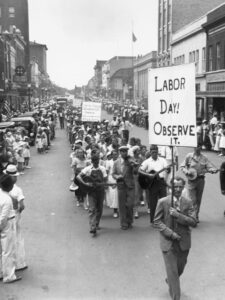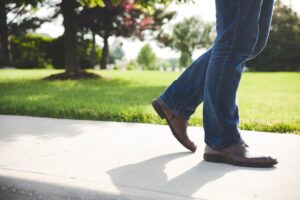It’s Labor Day. Stop Sitting Around
The concept of Labor Day began on September 5, 1882, when union leaders marched in what is thought of as the very first Labor Day parade. Over 20,000 disgruntled New York City workers from a wide variety of industries, such as clothing makers and railroad workers (including children), had enough of their unsafe conditions after being forced to work 12 hours a day in spaces that made them sick.
On June 28, 1894, President Grover Cleveland made Labor Day official by signing a law designating the first Monday in September as Labor Day. The day honors the American work force and the contributions of laborers to development and achievements of the United States.
The tradition of Labor Day began at the height of the Industrial Revolution, when the average American worked 12-hour days and seven-day weeks in order make ends meet. And despite restrictions in some states, children as young as 5 or 6 worked in mills, factories and mines across the country, earning a fraction of their adult counterparts’ wages.

Demanding physical labor and long workdays helped make America a great nation as we progressed from the agricultural revolution to the industrial revolution. But as we’ve advanced through the age of science and the digital revolution, physical work has been less of a requirement in the daily life of the average American.
As of 2021, according to the Bureau of Labor Statistics, the average American works 38.7 hours a week. Only 10 percent of Americans hold physically demanding jobs, where they engage in heavy work activities like construction and moving heavy materials. That means the other 90 percent of us probably spend a lot of time doing work that involves sitting. We sit at a desk when we respond to emails, look at spreadsheets, or connect to our co-workers through a video conference. We sit in our cars as we drive to work (if you still do that), drive to see customers, drive to get supplies, or drive to get lunch. We sit in chairs when we attend meetings or wait in a reception room, or watch our kids and grandkids play and practice sports.
The statistics are all over the place regarding how much time we spend sitting. But it seems like the average person spends about 7.7 hours a day sitting, which equals about half of our waking hours. That’s a lot of time not moving. The human body was designed to move, and for thousands of years, that’s what we’ve done. If you want to calculate how much time you spend sitting, check out the sitting time calculator at juststand.org.
So how much time should we allow ourselves to sit each day? According to Dr. David Dunstan, one of the leading researchers on the health risks of sitting too much, spending eight or more hours in a chair can be bad. And for optimal health, it would be best if we spent less than four hours a day sitting.
Dr. Dunstan’s research shows that sitting too much, regardless of how much exercise you get, adversely affects your cardiovascular health. A growing body of research shows a greatly elevated risk for all sorts of diseases. Sitting more than 8 hours a day will double your risk of type 2 diabetes.
Some health professionals have tried to say that sitting is the new smoking. Let’s not get confused on that one. The relative risk of smoking correlates to 2,000 unnecessary deaths per 100,000 people. The risk of sitting more than 8 hours a day correlates to 190 unnecessary deaths for 100,000 people. But that’s 190 people who might not have met an early demise if they’d just stood up occasionally.
Just standing instead of sitting can make a huge difference in your health. The folks at juststand.org recommend alternating between sitting and standing every 30 minutes for optimal health. I do this by working at this sit-to-stand desk I bought at IKEA for $400.
You can take your work station a step further (pun intended) by adding this under your desk treadmill to your sit-to-stand work station. I bought it for my wife for Mother’s Day for $359. She uses it every day at work to get in more steps. I personally cannot work on a computer and walk at the same time, but those of you who can should consider going for it.

Any time your work brings you to sit at a desk, set a timer to go off every hour. When the timer goes off, go outside for a 10-minute walk. You’ll come back to work energized with a clear mind and some new thoughts. I went outside for a 10-minute walk while writing this article.
Get as much low intensity, “non-exercise” activity as you can every day. Standing and moving a lot throughout the day are much more important to your metabolic health and play a great role in your energy expenditure than you realize. Look for every opportunity you can find in your day to move more.
Michael Easter, author of The Comfort Crisis, says that 98% of people choose short-term comfort over long-term growth. That’s because, given the choice between taking the stairs or the escalator, only 2% of us choose the stairs. Small choices like this compounded through days, weeks, months, and years make us lazy, weak, and obese. Our constant desire for comfort is destroying our health.
Every day pick a few places in your life where you will make things harder, not easier. Park a little farther out. Push your lawn mower instead of riding. Take the stairs. Stand instead of sitting when you work or wait. Walk down the hall to talk to your co-worker rather than sending that email. Just get up and move a little more. And get outside to enjoy the fresh air, even for just a 10 minutes a few times a day when the temperature dips into freezing territory or if the heat and humidity feel almost unbearable.
Hope you enjoy your Labor Day. Spend time with friends and family. Get out and have some fun. And get up and move around.
Stay Strong (and go for a quick walk),
Bo Railey

